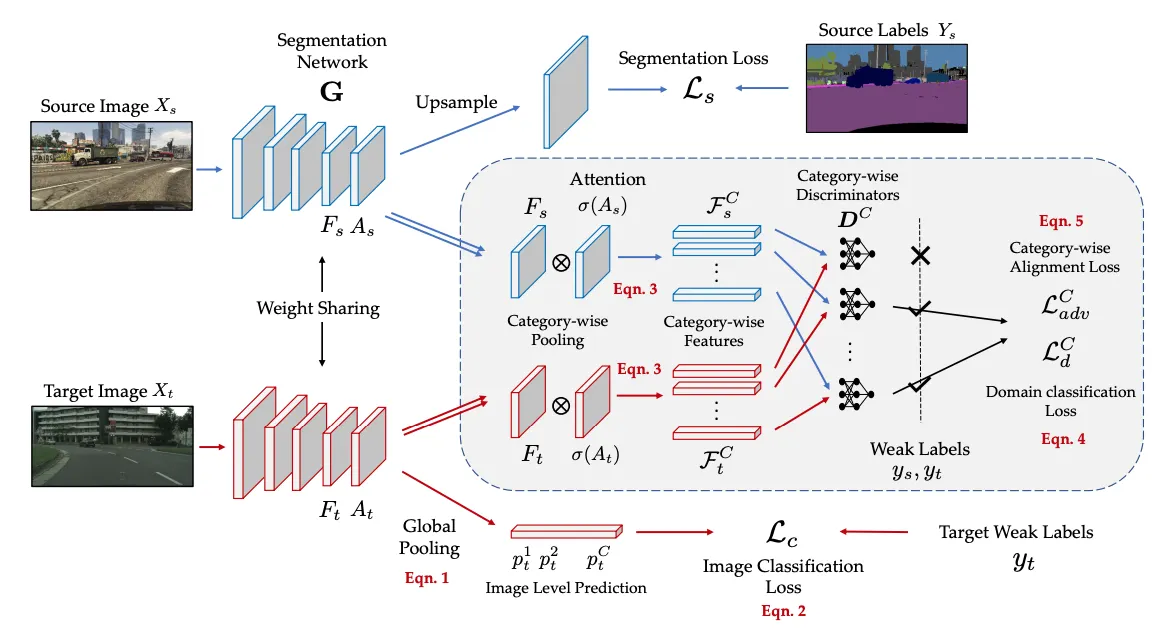Fig. 1: Our work introduces two key ideas to adapt semantic segmentation models across domains. I: Using image-level weak annotations for domain adaptation, either estimated, i.e., pseudo-weak labels (Unsupervised Domain Adaptation, UDA) or acquired from a human oracle (Weakly-supervised Domain Adaptation (WDA). II: We utilize weak labels to improve the category-wise feature alignment between the source and target domains. X/✕ depicts weak labels, i.e., the categories present/absent in an image
Fig. 2: The proposed architecture consists of the segmentation network G and the weak label module. We compute the pixel-wise segmentation loss Ls for the source images and image classification loss Lc using the weak labels yt for the target images. Note that the weak labels can be estimated as pseudo-weak labels or provided by a human oracle. We then use the output prediction A, convert it to an attention map σ(A) and pool category-wise features F C . Next, these features are aligned between source and target domains using the category-wise alignment loss L C adv guided by the category-wise discriminators DC learned via the domain classification loss L C d .


